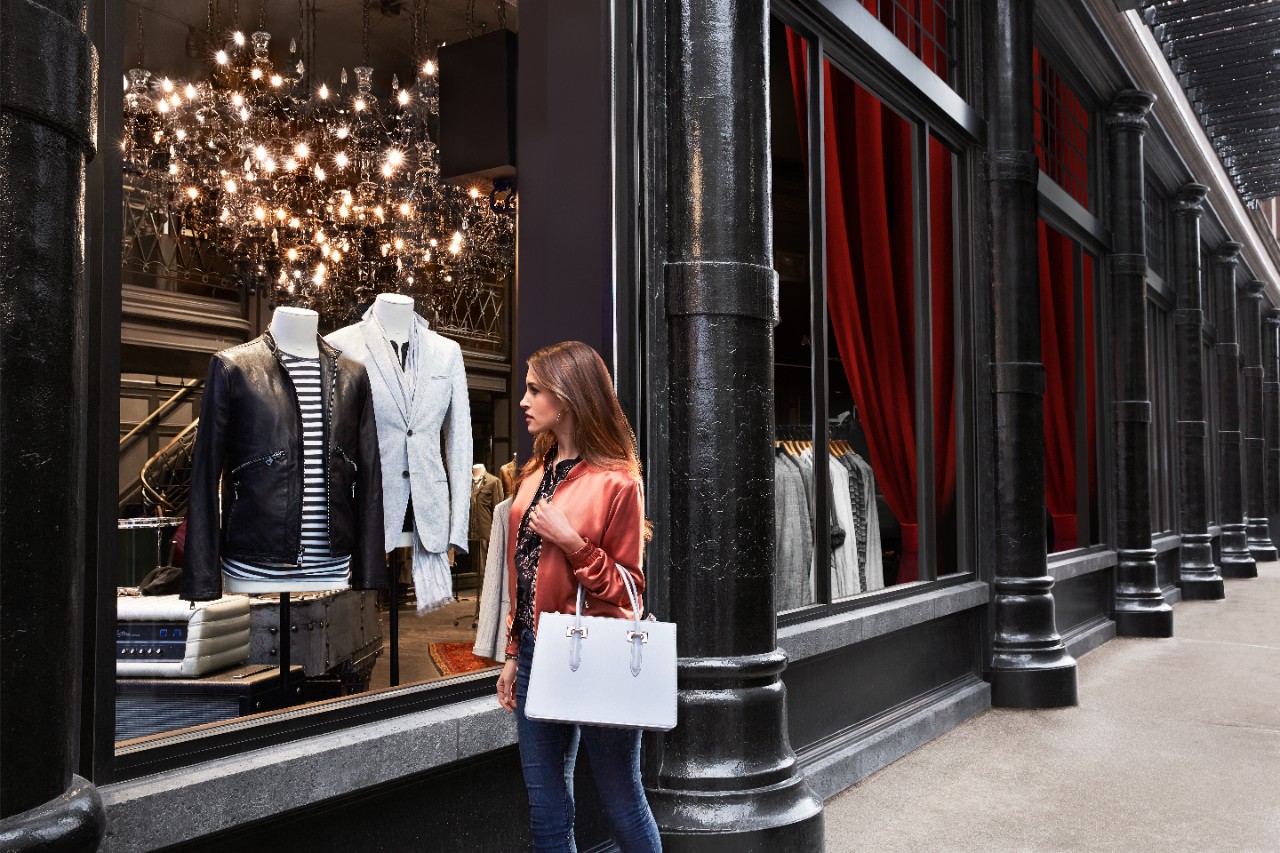Glass for storefronts
Provide a clear, unobstructed viewing experience

Retail outlets such as high-end fashion and jewellery stores, furniture and car showrooms, as well as restaurants and hotel lobbies, all share a common need: to give customers and passers-by a clear, unobstructed view of displayed products and inside spaces. This means storefront glass should offer the lowest possible reflection and glare combined with the highest transparency. In the daylight, storefront glass can act like a mirror, with customers struggling to see clearly products within storefront displays and deeper within the store. The need for brands to present themselves attractively and be identified appropriately is greater than ever, and the storefront has a key role to play in catching the attention of passers-by.
Which type of glass should be used for storefronts?
In addition to offering maximum visibility by reducing reflections and glare, glass for storefronts should also provide safety, security, durability and UV-protection, as well as noise reduction and thermal insulation if required.
In order to select the right glass for storefronts, several factors should be considered:
Help limit visual disturbance
Fewer reflections in the glass can help increase the perceived value of displayed products. The entire shop becomes the display, as the glass allows potential purchasers to view much more than what is directly behind the glass. Reflections can fade out colors of furniture and clothing and the products lose their impact. The mirror-like effect can create a barrier between the street and entering the shop. Guardian Glass recommends using a glass with a light reflection below 15% to help limit visual distortions and create open, welcoming shops, restaurants, hotel lobbies and showrooms.
The use of oversized glazing in storefronts can also help optimise the viewing experience for customers. Larger size glass panels require less framing, allowing displayed products, restaurant interiors and hotel lobbies to be showcased to their fullest potential.
Provide safety & security
Retail storefront valuables need to be protected from intruders. Combining the benefits of a low-E coated glass with laminated glass can help reduce the risk of intrusions and break-ins, but can also help reduce the risk of injury to people if they accidentally fall onto the glass. Guardian Low-E coated glass can be tempered, heat strengthened or laminated for safety and security applications.
No need to compromise on energy performance
High transparency can be associated with poor thermal performance. Low-E coated glass provides good thermal insulation and a reduced solar heat gain compared to standard clear float glass to help prevent overheating in the building and lower the demand on air conditioning systems.
Also consider using a low-E coated glass with optimum color-neutrality for more accurate colors and views of interior spaces and displays.
Want to know more about glass?
Guardian offers you a wealth of technical notes, tools and online learning to enhance your knowledge about glass and help you specify the most appropriate glass for your project. Connect to the Resource Hub to learn more!
Optimized light transmission
As the light transmission of glass increases, the more UV rays pass through the glass, which could potentially damage any displayed products.
The interlayer used in laminated glass can absorb up to 99% of the damaging UV rays which can be responsible for up to 50% of fading. This protection means that interior surfaces and furniture are likely to last longer.
Our glass products for storefronts:

ClimaGuard®
Guardian ClimaGuard is a growing range of advanced glass products for windows, doors, conservatories, skylights and retail storefronts. The coated glass can be tailored to suit different climates and to help make living spaces and retail storefronts more appealing, comfortable, and bathed with natural daylight. Whatever the requirements, Guardian ClimaGuard® glass can offer a solution.

SunGuard™ High Performance Neutral 70
SunGuard High Performance Neutral 70 brings the aesthetics of colorless glass together with all of the performance you expect from high-performance glass.



